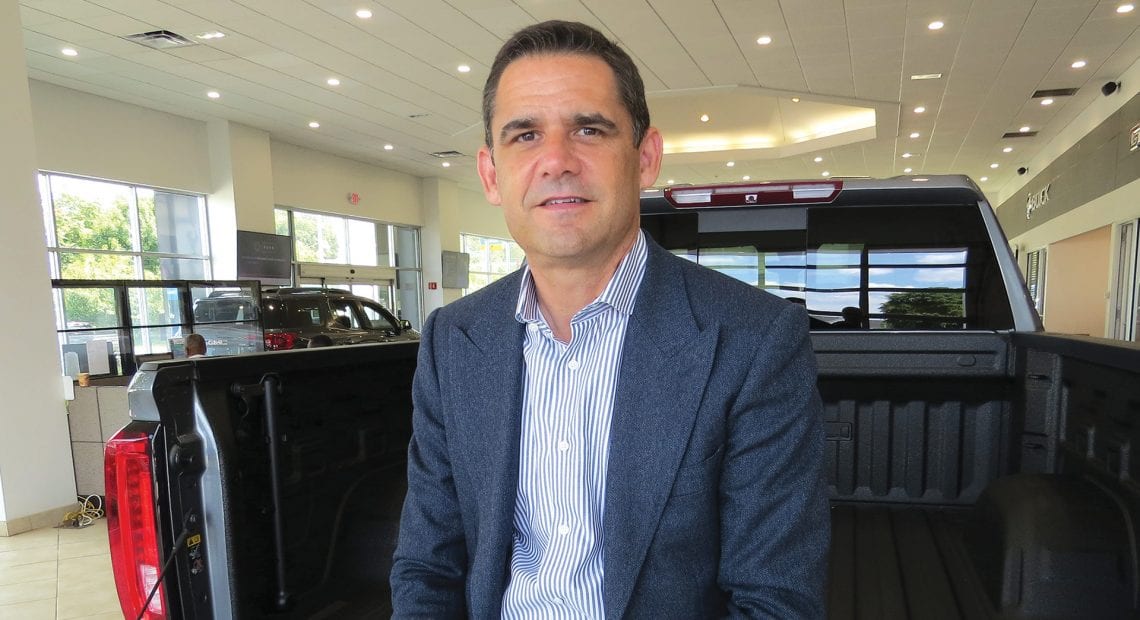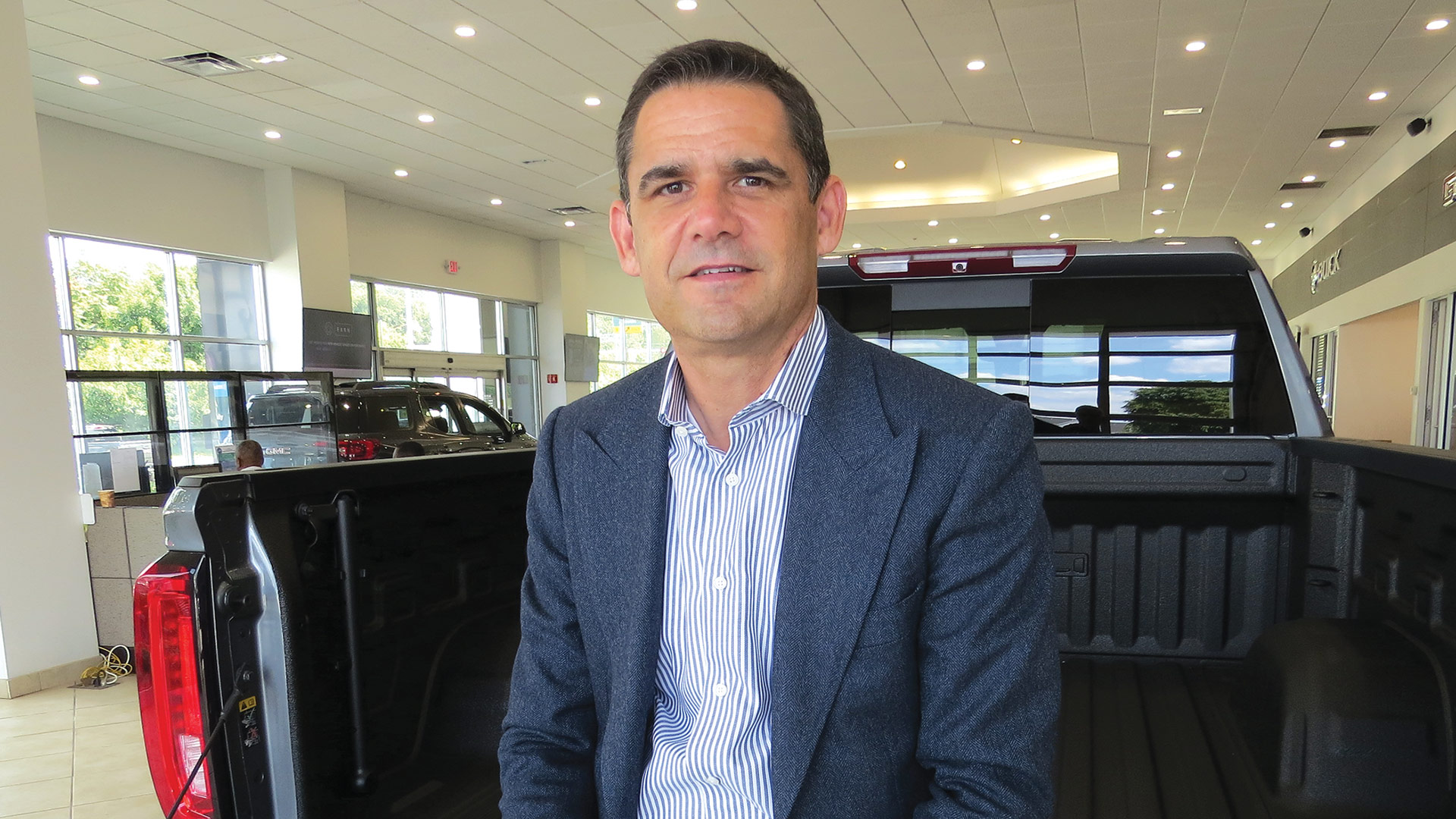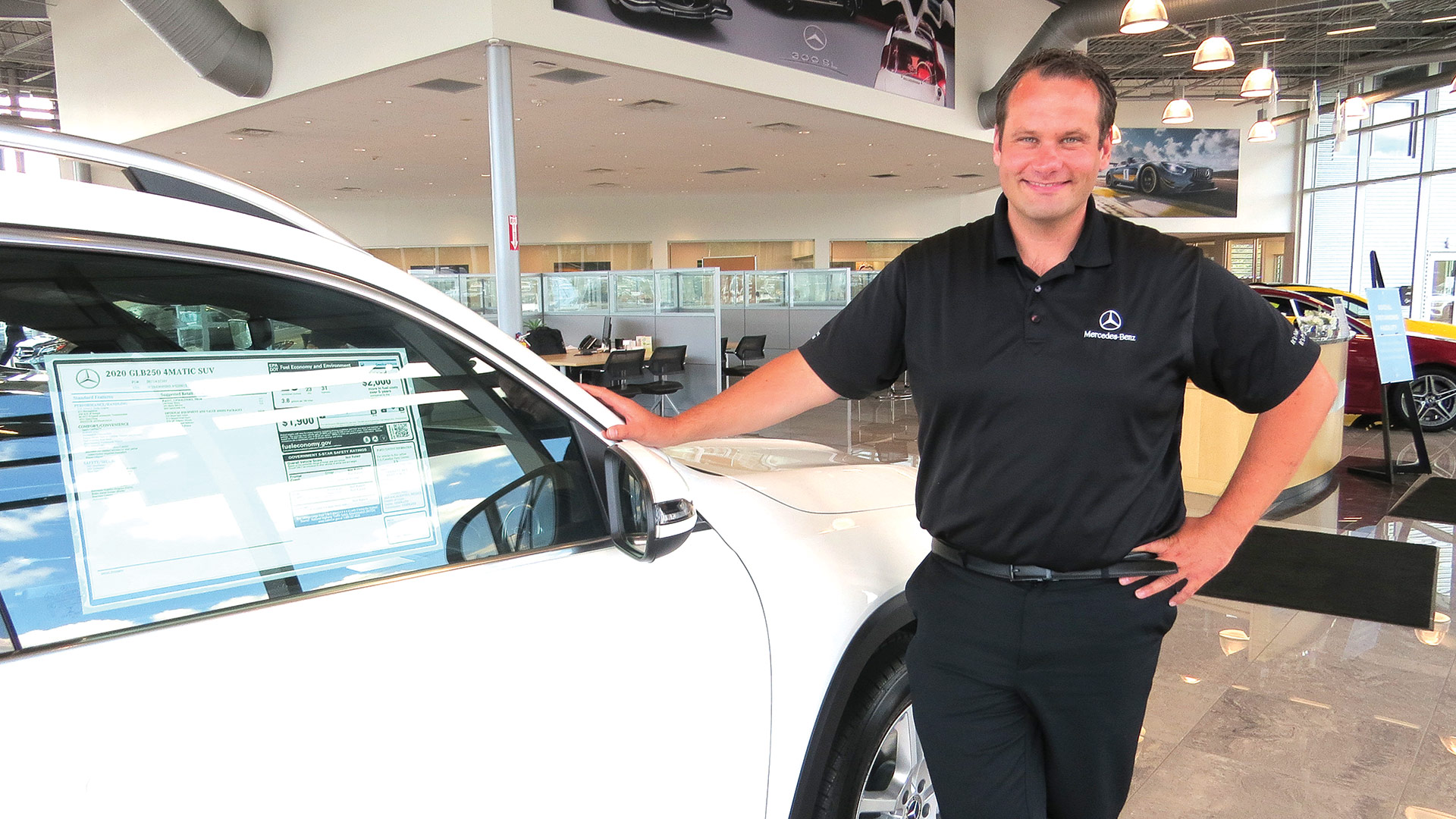
Lack of Inventory, Skyrocketing Prices for Used Cars Dominate Market
Driving Forces

Ben Sullivan says inventory has been an issue for many car dealers, but overall, the picture is much brighter than analysts were predicting in the spring.
Back in the earliest and darkest days of the pandemic (at least in this part of the country), analysts within the auto industry were predicting that overall sales for 2020 might be off perhaps as much as 80% from the year prior.
Those projections turned out to be well off the mark, as were some of the later estimates as well, said Ben Sullivan, chief operating officer for Balise Motor Sales, adding that a number of factors have made this year — and it’s a little more than half over, so a lot can still happen — much better than perhaps anyone could have imagined back in late March and early April.
These factors include stimulus checks that provided some disposable income for many people, as well as some extremely attractive incentives from the manufacturers, including 0% interest for as many as 84 months, job-loss protection, and no payments for six months.
“From an auto-dealer standpoint, I don’t think we were intended to be direct beneficiaries of any stimulus money,” Sullivan said. “But what the consumers are doing with the money has certainly offset what we expected to be a much steeper decline in the auto business than what we have actually experienced.”
But some of these same factors, coupled with pandemic-forced factory shutdowns, have created a slew of challenges for auto dealers as well. These include shortages of inventory for new cars, although there seems to be some improvement on that front, according to those we spoke with, and an even more pronounced shortage of used cars, which is spurring something almost historic when it comes to the prices offered to those willing to trade in vehicles or just sell them outright — something that’s happening with increasing frequency.
“There’s an unbelievable shortage of used cars,” said Sullivan. “There just weren’t as many cars coming into the system, for a variety of reasons, and that made used-car trade-in values go up. And people are recognizing that and saying, ‘if there if was a time to trade in a car, now’s the time’ — and that’s helping the new-car market.”
As for overall inventory, a drive by any dealership in the area would reveal fewer cars in the lot, a clear reflection of what’s happening with both new and used vehicles, said Peter Wirth, co-owner of Mercedes Benz of Springfield, noting that his store is typical in most respects. There’s a smaller supply of used cars (only about 12 days, as opposed to the 30-to 45 days that would be typical) and fewer new cars as well as the factories try to catch up for the time lost when they were closed or making other products, such as respirators, in the case of General Motors.
“There just weren’t as many cars coming into the system, for a variety of reasons, and that made used-car trade-in values go up.”
The situation is improving, though, and by late August, most expect a return to something approaching normalcy.
“We’re starting to see inventories coming back, which is exciting for all of us,” said Carla Cosenzi, president of TommyCar Auto Group, adding that, while the landscape may change and there remains a good deal of uncertainty, there is currently demand for those cars that will soon be filling the lots.
Which is good because, while sales of used cars (if dealers can get them) have been more than solid, new-car sales have been off — but, again, not as much as the experts thought they would be back when states were shut down and governors were rolling out phased reopenings.
“I’d say, on average, the sales pace for the new-vehicle industry in the Northeast is probably down 10% to maybe 15%,” said Sullivan, adding that these numbers could not have been imagined back in the spring, when it looked like the bottom might fall out of the market.
Looking ahead … well, looking ahead is something that’s difficult in any sector. But those we spoke with said that, overall, dealers are in decent position for quarters three and four. Inventories are improving, there is still some pent-up demand, there are still plenty of incentives, and new models are arriving on many lots.
But as they’ve seen already this year, things can change in a hurry, and projections — as those made way back in March can attest — are difficult to make.
Hitting the Accelerator
As he talked with BusinessWest at the Mercedes dealership on Burnett Road, just off turnpike exit 6, Wirth noted that, in many respects, a touch of normalcy has returned to this store, and the business of car selling in general.
Indeed, he noted there were several people sitting in the service waiting area, more than there would have been back in the spring, when ‘pickup and dropoff’ was the order of the day — and it’s still a popular option. Meanwhile, all employees are back at the dealership — many of those who could were working remotely in the earlier days of the pandemic — although there are now vacant workstations between those with people, and some sport plexiglass dividers between them. Perhaps most importantly, business is … well, perhaps not normal, but it’s certainly in the ballpark.

Peter Wirth says business is returning to something approaching normal at Mercedes-Benz of Springfield, and the summer and fall look promising as new models roll in.
In many respects, the dealership is well-positioned for a solid year, despite the pandemic and various negative forces it has created, Wirth said, listing everything from those aforementioned factory incentives — Mercedes has them as well — to lingering, pent-up demand; from new models arriving regularly to the mix of vehicles consumers are demanding.
“This might be the second year that we’re producing more SUVs than cars on the new-car side, and we’re almost at 60-40 now,” he explained. “It took us a couple of years to get there, but that’s what the market wants. So, maybe for the first time in five years, we’re actually in sync with what the market wants, and I think that’s going to help us.”
But while there are some signs of normalcy and even progress when it comes to sales volume, there are reminders everywhere that these are very different times — from the masks on the customers and employees to the deep cleaning that accompanies every car that leaves the service bay, to the cars in the lot, or the lack thereof, to be more precise.
Sullivan told BusinessWest that inventory has been an issue across the broad portfolio of makers within the Balise stable. Closed factories were a big contributor to the problem, he said, but supply-chain issues were, and still are, a factor as well.
“Next to the tsunami that hit Japan, the pandemic and everything it has brought has had perhaps the most impact the auto industry has seen since World War II,” he explained. “The supply chains got interrupted, and this is a global industry; there’s parts from Scandinavia, China, Japan, Mexico, Canada, the list goes on. And it really only takes one part to not be able to have a production line running.
“If you have a plant that goes down, and you’re missing that key component, you can’t build an F-150, or a Silverado, or a Camry,” he went on. “The industry has been absolutely disrupted from an availability standpoint. But the good news is that it’s a pretty resilient industry; they find other suppliers and ways to navigate through. But we are a low point of availability.”
Some makers were hit harder than others, he continued, noting that General Motors never fully recovered from the strike of last year before the pandemic hit, and the arrival of COVID-19 further complicated matters, especially when it comes to the production of trucks, one of the more popular items in recent years.
Unlocking Options
Overall, though, and especially as the summer has progressed, buyers have had a better time of trying to find the make, model, and color they want. Mercedes has a sister store in New York that effectively doubles the dealership’s chances of quickly supplying want the buyer wants, and Balise and TommyCar have similar relationships within the industry.
Some are settling for maybe their second-favorite color or a model with most but not all the options they were looking for, said those we spoke with, while others chooose to wait for exactly what they want. And the wait is getting slightly shorter.
“We’re lucky that we carried a good days’ supply of inventory before this happened, so we were in a good position as far as the number of units we were able to maintain through this, and now, we’re starting to see the manufacturers supplement the inventory back,” Cosenzi said. “But the biggest hurdle was being able to get the exact specifications a customer was looking for when it came to new cars.”
If the new-car market is getting somewhat back to normal, the same can’t really be said for used-car buying, which, as noted earlier, is in what would have to be called uncharted territory — or at least a place visited very infrequently.
Using words and numbers, those we spoke with said demand for used cars is through the roof — even for convertibles — and this is definitely a sellers’ market.

Carla Cosenzi says getting used cars has been a real issue for most car dealers, and that will continue to be a challenge for the foreseeable future.
Sullivan knows, because he recently was a seller — if you count trading in as selling.
“I traded my wife’s car in two weeks ago, but it really is the best time you could ever ask for,” he said, adding that prices are up, on average, almost $1,800 per car over the past few months. “With my car, I got $2,000 more than I would have two months previous — or two months from now. It just happens to be that timing in the market — the used-car market has defied every industry analyst’s predictions during COVID.”
Overall, a number of factors are contributing to the bustling used-car market in the 413, Wirth said. For starters, this is more of a used-car market than a new-car market, and from all he can gather — he’s been in it for four years — it always has been. What’s more, with the pandemic creating questions about the future and some economic uncertainty for many, used cars are being seen as an attractive, less risky option than buying new — even with all those incentives from the carmakers.
But supply, as it is with new cars, is perhaps the biggest driving force.
“I think that the used-car market will fall at some point, but you never know; it’s so hard to predict what’s going to happen given the circumstances.”
Sullivan told BusinessWest that most all of the auction houses where so many used cars are acquired by the dealers were closed for a long stretch early this year, removing those supplies. Meanwhile, many leases were extended due to the pandemic, taking those cars out of circulation. And some consumers simply decided that, given the conditions, they would hang onto their car for at least another year.
All this forced dealers to look elsewhere and explore options ranging from buying some of the suddenly unneeded rental cars cluttering lots across the country to buying cars off the street, a tactic Balise deployed.
And that imagination has been needed, because demand — fueled by cautiousness in the era of COVID-19 and other factors — has certainly spiked.
Bottom Line
As for what happens next … it’s hard to say with any certainty, because there are so many unknowns when it comes to the virus, the economy, additional stimulus, and other factors.
“There’s so much uncertainty, but especially when it comes to where the customer demand will settle in,” said Cosenzi. “And we’re prepared to adjust our operations accordingly. We’re starting to see a lot of the manufacturing plants open up and trucks pulling into the dealerships with the cars we’ve been waiting for. I think that the used-car market will fall at some point, but you never know; it’s so hard to predict what’s going to happen given the circumstances.”
Sullivan agreed.
“We’re not out of the woods yet,” he said. “And we’re incredibly grateful for being in as good shape as we are. When we looked at what the analysts were saying, that can really put a lump in your stomach. I’d like to say that we’re wildly optimistic, but we can’t be because we know there’s some choppy waters ahead.”
With that, he spoke for everyone in a business that has fared much better than most could have dreamed, but is still staring at some rather large question marks.
George O’Brien can be reached at [email protected]





